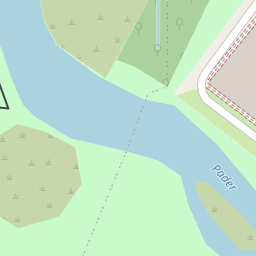LiDAR Radar Combi System
Overview
The main goal of the LiRaS-project is the integrated combination of a LiDAR and Radar system with a fine resolution, which is able to compete with moden high-resolution LiDAR systems by having an additional level of redundancy. The novel LiRaS system provides imaging, three-dimensional LiDAR and Radar data with a high signal-to-noise-ratio. Therefore, it is perfectly suited for safe, reliable, real-time capable and autonomous driving features. Using integrated photonic and electronic circuits in a high-quality optical semiconductor technology, extremely precise and robust sensor signals are generated.
This sensor signal originates from a laser signal, which is generated in the central station and then distributed to the different transmitter and receiver circuits. Inside these circuits, the laser signal can be used directly as part of a LiDAR. At the same time, an electrical Radar signal can be derived form the same laser signal, which is coherent to the original LiDAR signal. This results in a coherent sensor system working both in the rf-domain as well as the infrared-domain. As both sensors are operated coherently, a FMCW signal source with a extremely low phase noise is necessary. Therefore, the ansatz of the Unviersity of Paderborn, which employs a OEPLL and MLL, should be investigated further.
Motivation
Vehicles driving autonomously on level 4 and 5 (VDA-Definitions) need a variety of different information from the surrounding. To come to a clear decision, the data must originate from distinct sources and must be fault tolerant, tamper-proof and as independent from the surrounding as possible. Currently available sensor components, which provide this reliability and precision, are highly expensive and hard to be interlinked in the vehicle.
This is where the new research project "LiRaS" comes in: LiRaS combines core components of radar and laser-based LiDAR technology on a single chip to ensure comprehensive and fail-safe detection of the vehicle's surroundings. This combination brings together the advantages of both technologies in a single sensor and compensates for the technology-related limitations of the individual sensor. The vehicle's surrounding is captured by using different sensor techniques, thus improving the perception of autonomous driving features. At the same time, the developed LiDAR systems are supposed to be inexpensive, flexible and reliable in order to cope with the high demands of autonomous driving.
Objective
In the LiRaS-project, the Universtiy of Paderborn pursues the scientific/technial goal of a prototypical realization of a combi-system made of Radar and LiDAR for the use in vehicles. To reach this overarching goal, a variety of different minor goals must be adressed on the way:
- Research and development of a continuously adjustable OEPLL for the generation of FMCW signals in the optical domain
- Low-level modelling of a Radar-LiDAR combi-system
- Research and development of Radar and LiDAR tranmitters and receivers
- Monolithic integration of these Radar and LiDAR transmitters and receivers in a modern EPIC process
- Research and development of narrowband electro-optical and opto-electronic circuits.
Innovation
The technical innovations of this project are:
- Research, Design and assembly of a (quasi) continuous FMCW signal generator using a OEPLL and MLL
- Investigation of the feasibility of a Radar LiDAR combi-system
- Research and Development of a monolithicially integrated Radar LiDAR sensor frontend in a modern 45nm CMOS EPIC technology.
Key Facts
- Keywords:
- Radar, Lidar, Combi System, Sensor Combi System
- Research profile areas:
- Intelligent Technical Systems, Optoelectronics and Photonics
- Project type:
- Research
- Project duration:
- 05/2024 - 04/2027
- Funded by:
- BMBF
More Information
Contact
If you have any questions about this project, contact us!
Stephan Kruse, M.Sc.
System and Circuit Technology / Heinz Nixdorf Institut
Wissenschaftlicher Mitarbeiter

Jan Brockmeier, M.Sc.
System and Circuit Technology / Heinz Nixdorf Institut
Wissenschaftlicher Mitarbeiter

Results
The University of Paderborn can expect to increase its skills in optoelectronics, photonics, low phase noise signal generators and high-freqeuncy electronics and thus its prospects on future industrial cooperations as well as publicly funded research projects. Due to the expected results and the attained know-kow and reputation, further scentific positions, which are funded by follow-up projects, will be created. The overarching applicability und economical relevance is ensured by the intensive integration of the industrial partners.
Furthermore, the Universitly of Paderborn can use the results in future research projects, national and international publications and conference papers as well as the lectures given in courses linked to electrical engineering and computer science. The new insights allow the University of Paderborn to support the research and development in many industrial branches, especially in electrical engineering and the automotive sector, as part of publicly funded or commissioned research projects. As a facility for basic research, the University of Paderborn is in close contact with many companies from this industry.






















